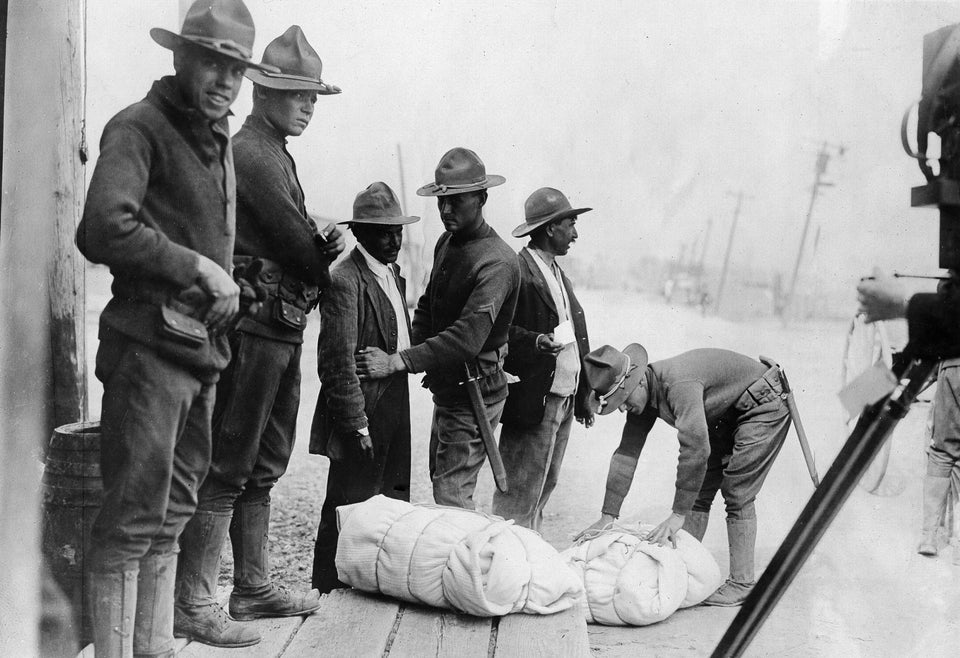
With President Donald Trump’s controversial Muslim refugee and immigration ban and his divisive Mexican wall on everyone’s mind, a town in Mexico tells a different kind of immigration story ― one of Chinese descent.
The town known as La Chinesca in Mexicali, Baja California is Mexico’s largest Chinatown, currently home to an estimated 5,000 people of Chinese descent, according to Mexican-Southern Californian newspaper San Diego Red.
The Chinese originally arrived to Mexicali between the mid-1800s and the 1940s, with many seeking work as agricultural laborers thanks to a treaty between the Chinese and Mexican governments, Fusion.net reported.
Turns out, it was cheaper for Mexican business owners to employ Chinese laborers than Mexicans at the time. What’s more, Chinese were further encouraged to head to Mexico in search of work instead of the U.S. thanks to the growing anti-Chinese sentiment in the U.S., escalated by the Chinese Exclusion Act of 1882, which banned Chinese laborers from entering U.S. for a decade.
These immigrants eventually settled on several blocks in Mexicali, building their own businesses and restaurants, and establishing roots for what would become the largest Chinatown Mexico has ever had.
The Chinese “used the city as a base for finding jobs working on the railroad system in the western U.S. and Mexico,” a La Chinesca tour guide told AGringoInMexico.com author W. Scott Koenig during a 2016 tour of the town.
“Some of them never left,” the tour guide added. “They lived in, as well as beneath, the town center and established the Chinesca in 1918.”
Not yet used to Mexico’s scorching summers when temperatures rise above 100 degrees, this new wave of Chinese immigrants built a network of underground tunnels and basements to escape the heat while still being able to move around the city, Vice News reported.
But these subterranean rooms served different purposes as the years went on.
According to the San Diego Red, Chinese-Mexicans fled to La Chinesca’s underground world to escape persecution when anti-Chinese sentiment reached a boiling point in Mexico during the Mexican Revolution.
As Mexicans adopted the belief that these Asian immigrants were taking their jobs and women, they subjected the Chinese to massacre and torture in some Mexican states including Sinaloa and Sonora. To escape this, many immigrants took refuge in La Chinesca in Baja California, where Chinese immigrants outnumbered Mexicans, according to Vice.
During the American prohibition of the 1920s, Chinese entrepreneurs turned the underground rooms into speakeasies, casinos and illegal brothels, which brought Americans south of the border for an indulgent escape.
Chinese-Mexicans continued to use the tunnels until repeated flooding forced them to close in 1970.
Today, the town’s Chinese Association, Asociación China de Mexicali, offers guided tours of the tunnels in order to keep the story of Chinese immigration in Mexicali alive.
The Chinese Association has become an important figure in Mexicali, with more second- and third-generation Chinese-Mexicans working to revive their families’ immigration stories.
“I think things have improved since I was a child because I think before we didn’t talk about Mexicali’s Chinese history as much,” 64-year-old Luis Chong, a second generation Chinese-Mexican and cultural director for the Chinese Association, told Fusion.net. “Now people want to know more, want to engage with it.”
Junior Chen, a 36-year-old Chinese-Mexican who leads historical tours of La Chinesca, believes that immigrants have made the Baja California town what it is today.
“La Chinesca is this: a combination of these physical structures and the stories of the people who have lived here, who marked and represented the vision of the Chinese community,” Chen told Fusion. “You find the essence of Mexicali’s history hidden in these streets.”

